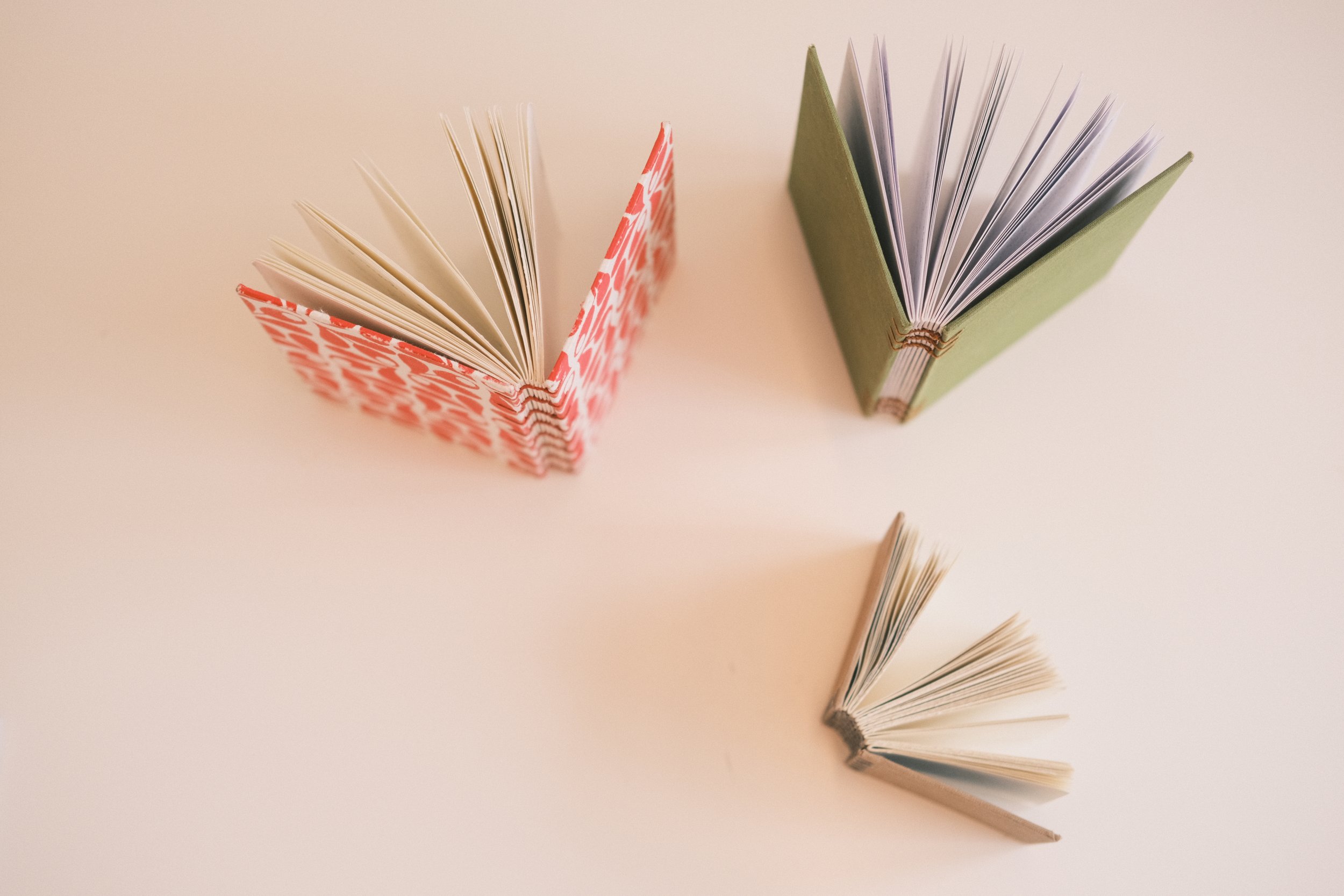binding feature: coptic stitch
The coptic stitch! Hugely popular for its handiness and hardiness, these books make perfect sketchbooks and journals. Known as one of several ‘lay-flat-bindings,’ these books’ open spine and chain-link sewing structure allow them to open to a perfectly flat position on a table and stay that way, making it much easier to write and draw inside than in some other hardcover books.
Coptic stitch books’ covers are attached via holes in the cover board, which also makes them very handy for artist books. Anything that you can punch a series of holes in can be a cover for your coptic stitch book. Wood, metal, plastic - you name it. This stitch is quite popular for creating artist books with found objects that already include holes, like cassette tapes, floppy disks, and other memorabilia from faraway times.
One complaint that folks sometimes express about the coptic stitch is that the two lines of stitching at either end of the book (the top and bottom or the rightmost and leftmost chain) look a bit different than the chains of stitches in the middle. This is due to the sewing pattern which has to deviate a bit at either end to enable a transition to the next signature.
We have a tip that can help neaten up those ends: our favorite way to keep the end stitches in line is to pair coptic and saddle stitch. Whenever you reach the end of your row, add a quick saddle stitch to your final loop before hopping into your next signature. If you haven’t tackled coptic stitch before, we teach this trick in our coptic workshop! See when the next one is coming up here.
Our official opinion: coptic stitch deserves the hype. It’s handy, it’s robust, and it’s fun to remix. We’d love to see your photos of your favorite coptic bindings!

